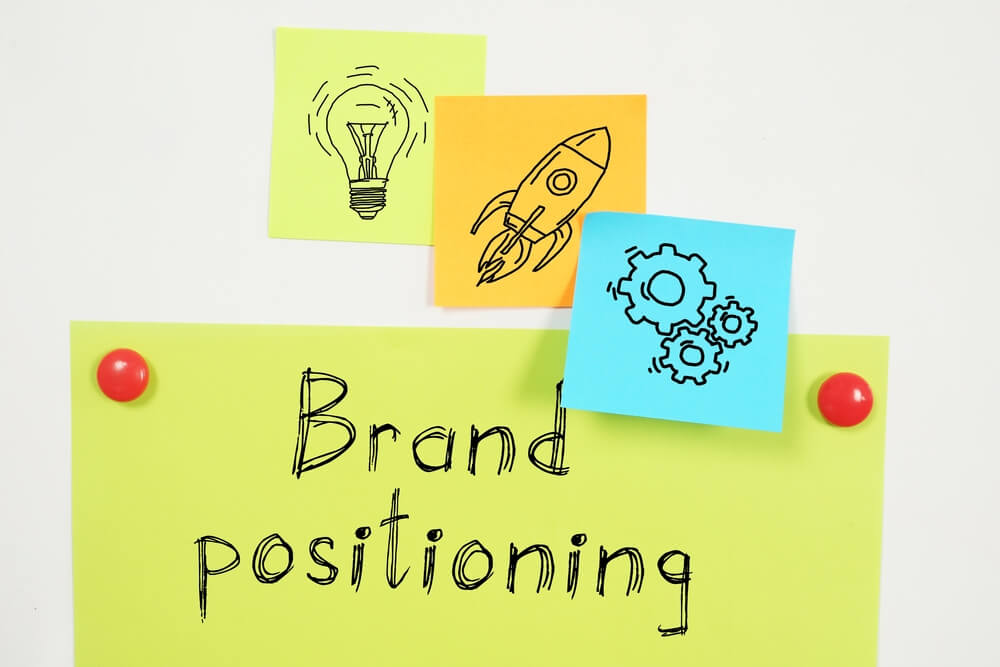
Beyond the Logo: Elements of a Successful B2B Brand Identity
Although a distinctive logo is essential to B2B branding, it is only one piece of the puzzle. Other elements are equally important in shaping people’s perception, revenue, engagement, and customer retention.
This article discusses these various elements that make up your B2B brand identity:
- Brand values and purpose
- Brand voice and tone
- Visual branding elements
- Brand storytelling
- Reputation management
- Brand differentiation and positioning
- Customer journey and experience
Continue reading to find out how these elements influence your overall B2B strategy. Let’s go!
Tired of investing in Search Engine Optimization without getting any results? See how Digital Authority Partners turns that around!
1. Brand Values and Purpose
In B2B, where products and services often seem similar, building a solid brand means defining the values and purpose that differentiate you from the competition. This step also helps you retain clients aligned with your company’s mission.
Determine your brand’s values and purpose with these strategies:
- Know your company’s mission and vision. These are foundational elements in defining your brand.
- Identify the core principles and beliefs that guide your company’s actions and decisions.
- Understand the perspectives and needs of your customers and stakeholders. Align your brand values and purpose with these to build stronger connections.
- Create a brand value and purpose that genuinely reflect your organization.
- Embed such value and purpose into all aspects of your operations.
Well-defined brand purpose and values signal stability and reliability. These traits encourage customers to trust your products or services, solidifying your brand identity.
2. Brand Voice and Tone

B2B marketing is often complex because of the different touchpoints and decision-makers involved. A clear and consistent brand voice and tone simplify communication, helping your audience better understand your company’s offerings.
Here is how to make your brand voice and tone consistent:
- Identify the personality traits that best represent your brand. Are you authoritative and professional? Friendly and approachable? Define these characteristics to guide your brand voice and tone.
- Align the brand voice and tone with your company’s core values.
- Research your competitors to understand their communication styles. Identify opportunities that let yours stand out.
- Create comprehensive brand guidelines that outline your voice and tone and train your team on them.
- Encourage your employees to embody the voice and tone in their communication.
Developing and maintaining a cohesive communication style effectively engages the target B2B audience, strengthening your brand presence.
3. Visual Branding Elements
Well-designed visual elements provide many benefits. They project a professional image and instill confidence in your company’s capabilities. In the B2B space, where trust is critical, a polished visual identity is reassuring to potential customers or partners.
Incorporate these key points to achieve high-quality visual B2B branding impressions:
- Select a consistent color palette and typography aligned with your brand personality and values. Use these elements consistently across all marketing channels.
- Develop visually appealing content that communicates your brand message. Use imagery that resonates with your target audience.
- Optimize the visual elements for digital platforms. Use responsive design principles to adapt your visuals to different devices.
- Regularly audit your visual materials for consistency with brand guidelines.
- Adapt your visual branding elements to evolving trends. Regularly reassess your visual identity for relevance.
Solid, cohesive visual branding leaves a more positive and lasting impression. It is easier to recall, improves brand awareness, promotes a seamless user experience, and increases your brand’s trustworthiness.
4. Brand Storytelling

Connecting with a B2B audience is often challenging because the relationship feels transactional. However, emotions are some of the most significant factors that determine purchase intention.
Maximize the power of empathy, persuasion, desire, and urgency with a compelling brand story. It humanizes your brand with relatable, authentic narratives.
Use these strategies to develop a persuasive brand story:
- Incorporate real-life examples such as testimonials and success stories. Highlight how your products or services have positively influenced your B2B clients.
- Select the most appropriate platform or channel based on your story and purpose. For example, day-in-the-life videos make great Instagram and TikTok reels.
- Use storytelling techniques such as narrative arcs and character development to draw your audience in and keep them engaged from beginning to end.
- Keep your story authentic and transparent without excessive embellishments and exaggeration.
- Encourage audience engagement and interaction through user-generated content and incorporate them into your brand story.
A good storytelling strategy pulls in potential customers and converts them into leads. It solidifies your brand identity, helps you better connect with the audience, and stresses your difference from competitors.
5. Reputation Management
A strong reputation provides many benefits. It sets your company apart from competitors, keeps customers, and transforms loyal clients into brand advocates. Manage it effectively to increase your brand’s overall value in the B2B industry.
Here are some reputation management tips to follow:
- Regularly monitor online channels such as social media and review websites. Use these platforms to stay informed about brand mentions.
- Promptly and professionally address any feedback or inquiries.
- Actively seek feedback from clients and partners and use it to enhance the customer experience.
- Settle negative feedback immediately. Listen to and acknowledge the concerns while taking steps to fix the underlying issues.
- Collaborate with reputable organizations, influencers, and thought leaders. Participate in industry events to showcase your expertise.
Customers are more likely to continue doing business with a company they trust and respect. Supervise your company’s reputation carefully to achieve a solid B2B brand identity.
6. Brand Differentiation and Positioning

Strategic brand differentiation and positioning quickly sets you apart from competitors and shortens the conversion process. The B2B audience immediately spots your value, resonates with you, and takes less time to evaluate your product or service.
How do you make your brand different? Consider these tips:
- Identify your unique selling proposition (USP). The USP is the distinctive advantage that sets your products or services apart from the competition and emphasizes your value to the target audience.
- Craft a clear and compelling brand positioning statement based on your USP and target audience insights.
- Reinforce your brand positioning in every interaction, such as creating a consistent brand experience across all sales channels.
- Continuously monitor market dynamics to stay responsive to changes and refine your brand positioning and USP over time.
- Leverage your USP as a foundation for innovation, exploring new ways to deliver value to your customers.
Use your strengths when differentiating by identifying your core competencies, expertise, competitive advantages, and USP and featuring these aspects. This reinforces what qualities set you apart.
7. Customer Journey and Experience
Delivering outstanding service contributes to increased customer lifetime value (CLV). On the other hand, knowing the customer journey leads to more satisfied clients and positions your brand as reliable.
Implement these strategies to provide a satisfying B2B customer journey:
- Map out the entire customer journey, from the initial awareness to post-purchase matters. Identify the touchpoints and interactions at every stage.
- Personalize the customer experience through hyper-personalization. Use data and analytics to segment customers and help you deliver personalized content.
- Streamline the buying process to make it easy for customers to interact with your business.
- Anticipate customer needs and concerns throughout the customer journey. Offer support and guidance to help them navigate potential challenges.
- Focus on building long-term relationships with customers by delivering value. Stay engaged with customers beyond the initial sale, providing ongoing support and opportunities for collaboration.
Being familiar with the customer journey means delivering a customer-centric experience. Consistently delivering service, messaging, and interactions that align with customer needs and priorities at each stage reinforces an identity as a brand that puts them first.
Summing Up
Robust B2B branding involves a holistic approach that goes beyond aesthetics. A logo enables customers to recognize you, but an overall solid identity creates a lasting impression in the industry.
Ready to improve your branding strategies? Contact Digital Authority Partners (DAP) today and start driving conversions.
Want To Meet Our Expert Team?
Book a meeting directly here




